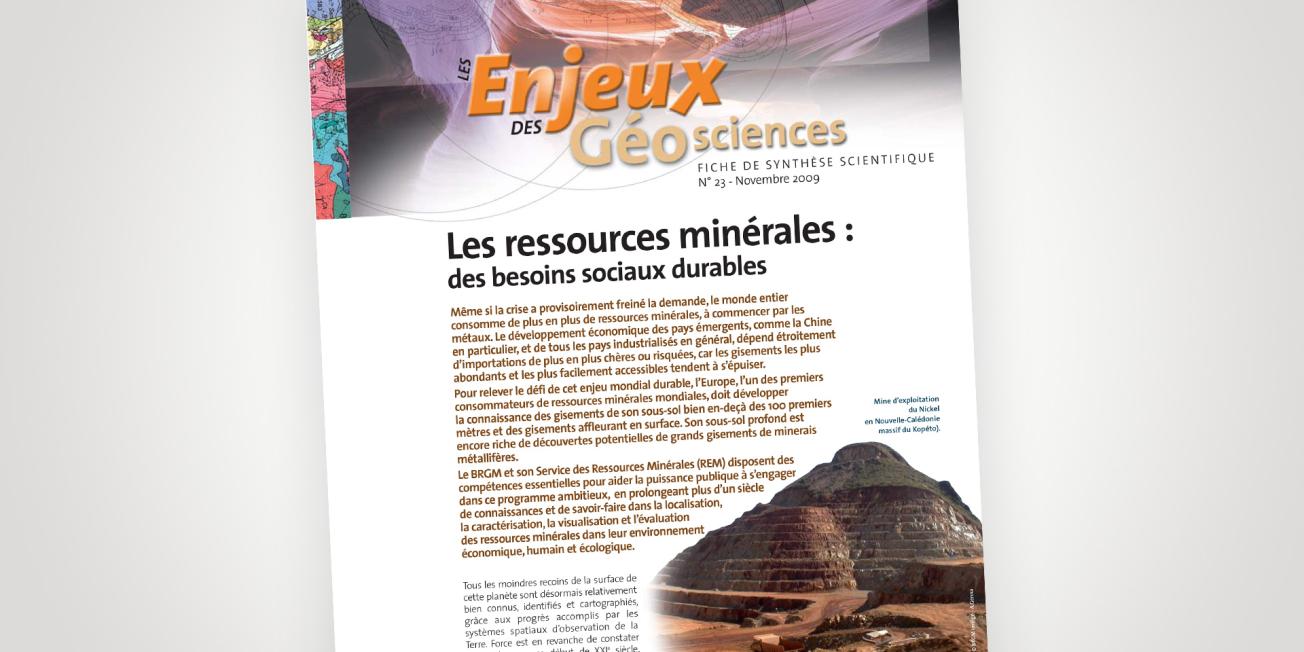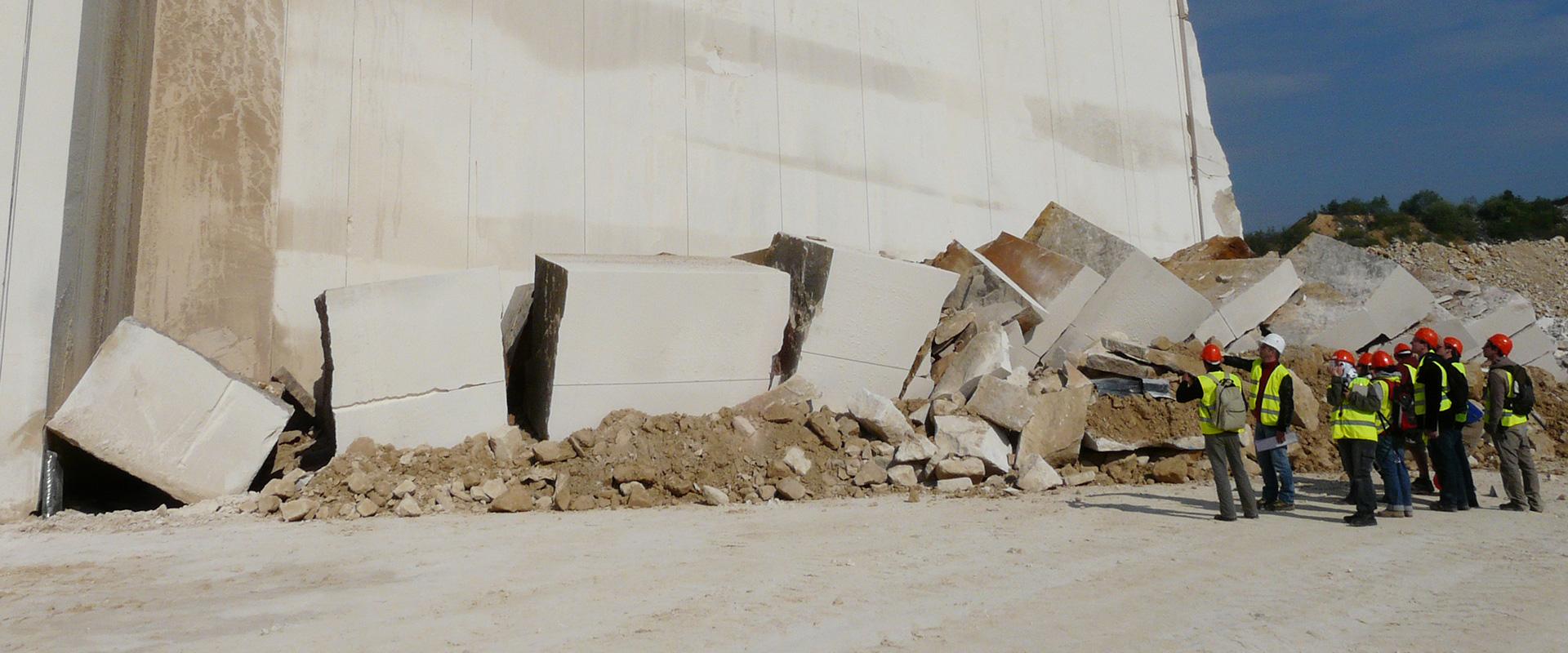
Cover of the thematic file.
© BRGM
Meeting the challenge of this global issue
Europe, one of the world's leading consumers of mineral resources, needs to develop knowledge both about the deposits in its subsurface well below the first 100 metres and the deposits to be found in surface outcrops. Its deep subsurface still has an unexplored potential of major metal ore deposits.
BRGM has the essential skills to help public authorities embark on this ambitious programme, building on more than a century of knowledge and know-how in locating, characterising, visualising and assessing mineral resources in their economic, human and ecological environments.
The earth's subsurface is the reservoir of 4 major families of minerals, all irreplaceable and indispensable for economic and industrial development: construction materials (sand, gravel, etc.), industrial minerals (talc, clay, limestone, phosphates, sulphur, etc.), energy materials (oil, uranium, coal, lignite, peat, etc.) and metalliferous minerals (iron, chromium, lead, zinc, copper, manganese, rare metals, etc.). Gems and precious stones can be added to this list.







